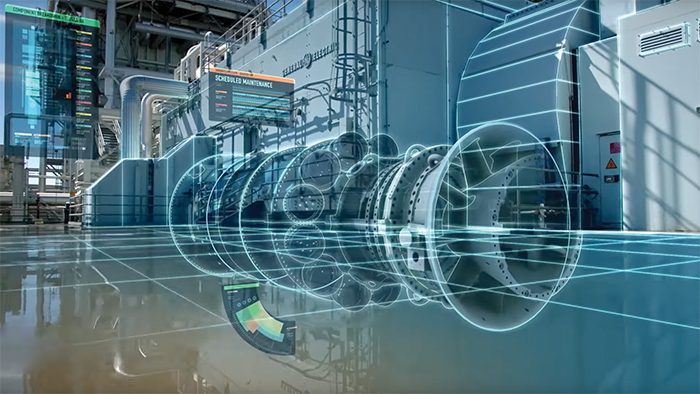The POWER Interview: How Gas Power Can Reap Value from Digitalization
Credit to Author: Sonal Patel| Date: Thu, 14 Apr 2022 14:47:44 +0000

Digitalization is furnishing nearly every facet of the power industry with new insights that promise value for generating assets, including refining efficiencies and shaving down operating costs. But though myriad solutions have been introduced, adoption by some power sub-sectors has been cautious, mainly because the advantages of the industrial internet of things (IIOT) are not immediately obvious.
In the gas power sector, where technology developers are exploring new roles and applications to ensure gas power will remain relevant as power markets embrace decarbonization, digital technology is for example flourishing in the form of digital twins—digital replicas of corresponding physical systems—to represent detailed elements of the physical system as well as their dynamic behaviors, operation, and lifecycle degradation. Digital technology users in the gas power space, however, grapple with data management, which involves extracting useful information from large data sets that gas turbine–driven systems can generate. Another relevant concern is cyber security, including for remote connectivity, cloud solutions, data, and component procurement and quality assurance.
As part of a series of articles POWER published this year examining gas power technology trends and dramatic changes affecting the full natural gas value chain, POWER asked Martha Saker, digital product manager for GE Digital’s Power Generation, Oil, and Gas segment, for her insight on how digitalization is already tangibly producing value in the gas power sector. Saker, who manages GE’s Edge Optimization and Remote Operations portfolio, has worked on an array of digital solutions for power plant applications, including as they concern data management, controls, human-machine interfaces, cybersecurity, and operations.

| For more, see New Realms for Gas Power Technology from POWER’s March 2022 issue, and Gas Power Outlook: Volatility and Viability from POWER’s April 2022 issue. POWER also co-hosts the only in-person event dedicated to digitalization for the power and chemical process industries. The next Connected Plant Conference is slated to take place from May 23 to 26, 2022, in Atlanta, Georgia. |
POWER: What do you see as the outlook for the future of the gas power industry?
Saker: Gas power is a fundamental building block of the energy transition. The world’s demand for power continues to increase at a much faster rate than the viability of renewables to cover it. Technical challenges, such as power storage or hydrogen supply will take years if not decades to fully solve. In the meantime, gas power must cover the gap in the most carbon-effective manner. Technology is readily available to help power generators bridge the gap while reducing their carbon footprint.
POWER: Where can digital advancements play a role in gas power?
Saker: It’s no secret that the power generation industry around the world faces environmental challenges to meet climate change demands. However, perhaps not as well-known is that an aging workforce is leaving gaps in expertise and budget constraints are draining resources. Additionally, producers face orchestrating multiple energy sources requiring a new way to operate leading to issues with reliability and premature degradation at the machine level, as well as the rising cost of thermal assets challenging plants to meet business KPIs. Digital advancements will help power generation companies address all these challenges and help to reduce operations and maintenance costs, navigate the rising cost of thermal assets and meet decarbonization efforts.
Key digital advancements include software that uses artificial intelligence and machine learning, which can work autonomously in real-time to address climate goals, variable renewable generation, and weather patterns. There are also sophisticated solutions that provide economic impact with insights on preventative maintenance and asset health. These solutions, for example, may work to bridge the gap between hidden issues that are traditionally costly and difficult to address manually, or unify departments to ensure a more reliable and optimized plant/fleet.
POWER: Are there any specific digital solutions that you’d highlight that are showing important value for gas power operations and maintenance?
Saker: GE Digital’s Autonomous Tuning improves heat-rate which in turn reduces carbon dioxide and nitrogen oxide emissions and fuel consumption. Finding the ‘sweet spot’ for the gas turbine to operate most efficiently is typically adjusted each season. With unpredictable temperature swings, tuning the turbine, especially in remote areas, is not feasible on a daily basis. Autonomous Tuning automatically tunes the turbine every few seconds. This in turn reduces emissions and ensures the plant is operating most efficiently and reliably.
Power generators that benefit the most from Autonomous Tuning are located in highly regulated regions or with constrained emissions, such as Europe, the U.S. and Canada, or in any location that does not have consistent weather patterns. In addition, any site subject to fuel-quality variability issues or sites looking to reduce their operations and maintenance costs by reducing manual tuning and fuel consumption will benefit. Power generation plants have realized carbon monoxide reduction by 14%, nitrous oxide emissions decreased by 10%–14%; and fuel and carbon dioxide reduction between 0.5 and 1%.
—Sonal Patel is a POWER senior associate editor (@sonalcpatel, @POWERmagazine).
The post The POWER Interview: How Gas Power Can Reap Value from Digitalization appeared first on POWER Magazine.